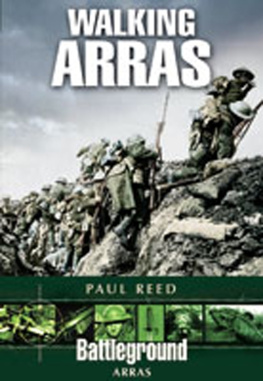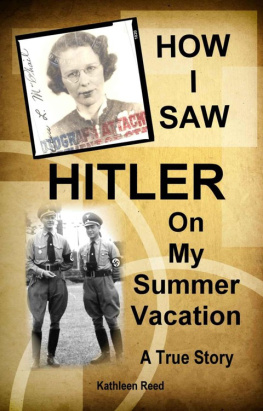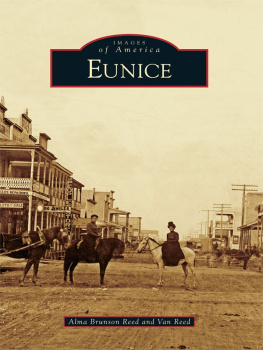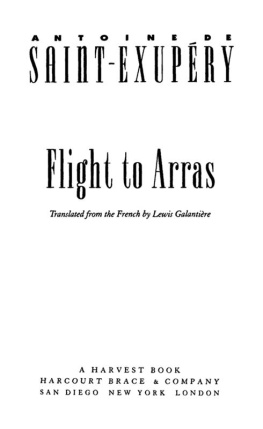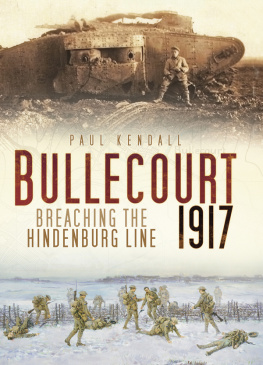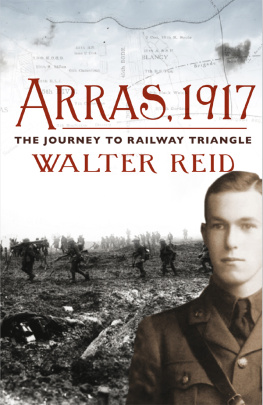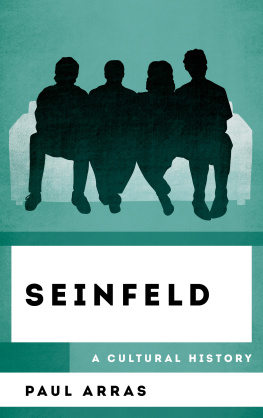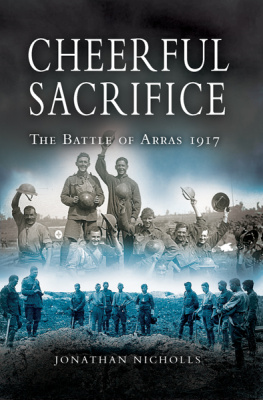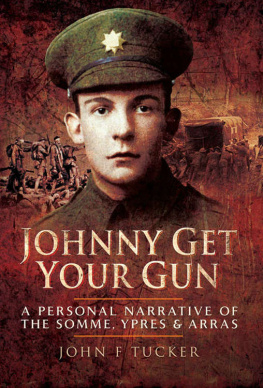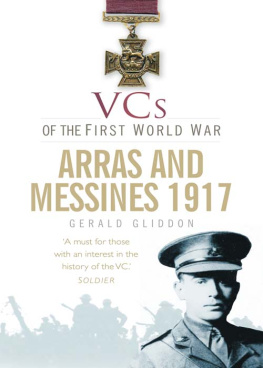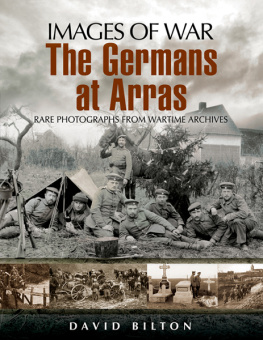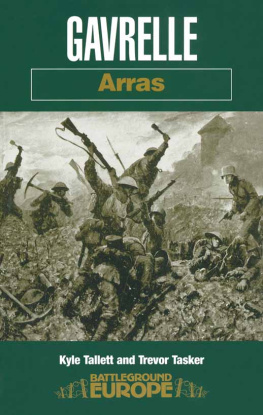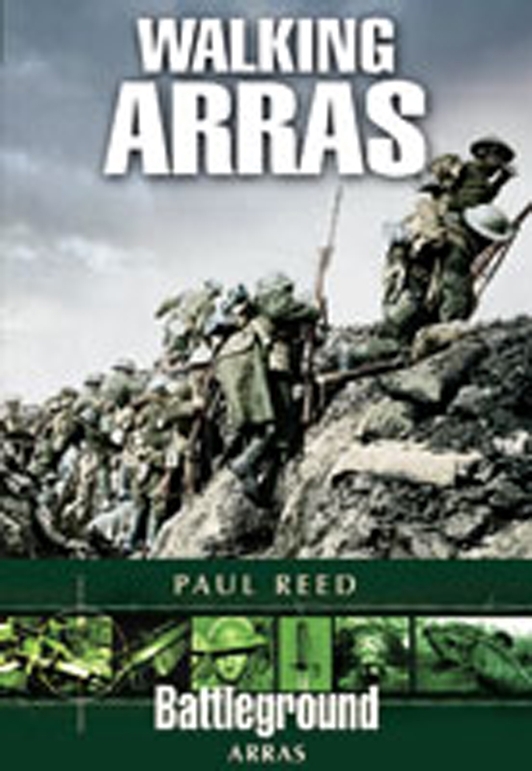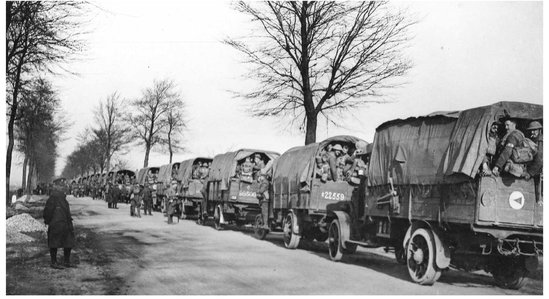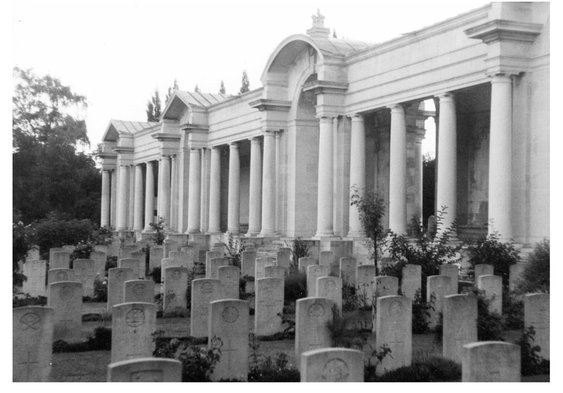As always, a book of this type takes many years to complete and I am grateful to a number of friends who have assisted. Of those who have walked and visited the battlefields at Arras with me I would like to mention: Geoff Bridger, the late Stephen Clarke, Brian Fullagher, Clive Harris, members of the Henry Williamson Society, Tony and Joan Poucher, the late Terry Russell, Frank & Lou Stockdale, Terry Whippy and Andrew Whittington.
In France thanks goes to: Andre Coilliott of Beaurains, Bernard Delsert of Cambrai, Tom and Janet Fairgrieve at Delville Wood, Jean Letaille at Bullecourt and Jean-Pierre Matte at Bernafay Wood. In Germany my good friend and colleague Alexander Fasse has also helped with German sources, for which I am particularly grateful.
I was privileged to interview a number of Arras veterans, sadly all of whom have faded away like all old soldiers. As the years progress, and I study the war more and more, I realise how lucky I was to have known them and how much they enriched my knowledge of the war. In particular I would like to mention: W.A.Baker (Royal Scots); George Butler (12th MGC); Harry Coates (London Scottish); Horace Hamm (12th Middlesex); Frank Plumb (11th Suffolks); and Macolm Vyvyan MC (96th SB RGA).
Finally my love and thanks goes to Kieron, soon to be an author in her own right, and to Ed and Poppy who follow us around the battlefields. Poppy in particular has spent much of her young life walking Arras with me, and I hope it has made a lasting impression!
APPENDIX 1
ARRAS CEMETERIES
This section of the book examines some of the key Arras cemeteries which fall outside the area of the main chapters but which contain many casualties from these battle areas. It also includes details of the Arras Memorial, where the majority of those who fell in 1917 are commemorated.
ARRAS MEMORIAL
The Arras Memorial is located next to the Faubourg-dAmiens Cemetery (see below), in the Boulevard du General de Gaulle, west of the main city centre and close to the Citadel, a French army barracks. There is parking, but visitors are advised not to leave valuables, as there have been many break-ins here in recent years.
Arras Memorial to the Missing, Faubour dAmiens Cemetery.
The Arras Memorial commemorates 34,734 soldiers from Britain, South Africa and New Zealand who fell in the Arras area from the spring of 1916, when British troops first arrived, until 7th August 1918, who have no known grave. The missing from 8th August onwards are on the Vis-en-Artois Memorial. Most of the dead are from the April-May 1917 Battle of Arras, or are those who died in the March 1918 operations. A separate section of the memorial, the Arras Flying Services Memorial, commemorates nearly a thousand airmen of the Royal Naval Air Service, Royal Flying Corps and the Royal Air Force, who were shot down along the whole Western Front (including Belgium), and who have no known grave. The memorial was designed by Sir Edwin Lutyens, with sculpture by Sir William Reid Dick.
There are thirteen Victoria Cross winners commemorated here, among them four who won their awards at Arras. Naval names from the Royal Naval Divisions actions at Gavrelle are also found here, along with South Africans who fought at Arras with the 9th (Scottish) Division. Arras has one of the highest proportions of missing for any British sector of the Western Front, with a high percentage of those who fell in the April-May 1917 battle commemorated on this memorial.
ACHICOURT ROAD CEMETERY
Achicourt Road Cemetery is located at the crossroads of the D919 from Arras to Bucquoy and the D5F from Beaurains to Achicourt. It is located down a grass path between houses and some allotments.
Achicourt Road Cemetery was started in March 1917 and remained in use until June; the graves of these four months are in Rows A to C, and forty-three of them, out of sixty-eight, are those of officers and men of the London Regiment from units in the 56th (London) Division. The cemetery was used again in August and September 1918, when Rows D and E (containing fifty-nine graves, of which fifty-one are Canadian) were made. Four more graves, from Achicourt Churchyard Extension, were added to Row E after the war. Burials now total seventy-eight British soldiers, fifty-two from Canada and one whose unit is not known. The only substantial burial ground moved here was:
ACHICOURT CHURCHYARD EXTENSION: it contained the graves of about a hundred French soldiers, and three British plus one from Canada. It was on the north side of the Churchyard.
AGNY MILITARY CEMETERY
Located in the grounds of Agny Chateau, the village of Agny once also contained also some British graves at the Railway Arch north of the village (now removed to Douchy-les-Ayette British Cemetery) and a German cemetery of more than a thousand graves (also removed) at Pont-Ficheux, where the Arras-Amiens road crosses the railway line. Agny Military Cemetery was started by the French and used by British units and Field Ambulances from March 1916 to June 1917. Two further burials were made in April 1918; and in 1923-24 some 137 graves were brought in from the surrounding battlefields east of Arras. The forty French graves were removed in the 1920s. Burials total 407 British soldiers, one from Australia and five German prisoners. The 118 unnamed graves are almost all among those that were brought in from the Arras battlefields after the war.
The most visited grave in this cemetery is that of Great War poet Second Lieutenant Philip Edward Thomas (C-43). Edward Thomas, an important poet and writer even before 1914, joined the Artists Rifles in 1915 and was commissioned into the Royal Garrison Artillery, serving with 244th Siege Battery at Arras. He was killed near Neuville-Vitasse on 9th April 1917, aged thirty-nine, while spotting for the battery. The blast of a shell sucked all the air from his lungs and stopped his heart. There was not a scratch on his body, which was brought back to Agny for burial by his men.
BEAURAINS ROAD CEMETERY
Beaurains is a village on the southern outskirts of Arras, and Beaurains Road Cemetery is just north of the village on the road from Arras (N37). Beaurains was captured, after only slight resistance, on the 18th March 1917 and the cemetery was begun a few days later. The cemetery was used, sometimes under the name of Ronville Forward Cemetery, when the Battle of Arras began up until the beginning of June 1917. The burials were made by fighting units and also by the 14th (Light) Division Burial Officer. It was used again for a short time in August and September 1918, in the Second Battles of Arras. At the end of the war burials totalled: 129 British soldiers, fifteen French soldiers and four German prisoners. The cemetery was then enlarged by the concentration of 188 graves from Ronville British and French Cemeteries, and from the surrounding battlefields. Burials now total: 303 British soldiers, fourteen from Canada and four Germans. There are twenty-three unidentified graves and fourteen Special Memorials to men once buried in Ronville British Cemetery, whose graves were later destroyed by shell fire. The main cemeteries moved here were:

